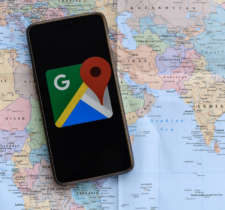Facial recognition payment system recently launched in Moscow is the first to be used on such a large scale.
Commuters in Moscow, Russia now have the option of using the new voluntary payment method called “Face Pay”. This method allows them to sign up by scanning their face in front of a camera at a designated turnstile. Prior to this commuters had an option available to submit their card details along with their photo identification. Moscow’s transport department has stated that any information stored on commuters to allow them to use Face Pay is encrypted securely. The facial recognition payment system is totally voluntary as all other payment systems also continue to be used.
Moscow is the first city to operate a facial recognition payment system on such a scale.
The city of Moscow is home to one of the world’s largest video surveillance systems. Facial recognition technology has been used there to enforce COVID-19 quarantines, as well as to make preventive arrests and detentions. While Moscow is no stranger to the use of facial recognition, as the city was also said to have used facial recognition technology during the 2018 football World Cup in an effort to find wanted criminals, this is the first time the city is using a facial recognition payment system. In addition, the city is the first to use facial recognition technology for a payment system on such a large scale. According to this article from Reuters, Maxim Liksutov, head of the Russian capital’s transport department, said in a statement recently “Moscow is the first city in the world where this system is operating on such a scale.”
Moscow’s new facial recognition payment system has received backlash particularly citing privacy concerns.
The new facial recognition payment system in Moscow has already received some backlash. Digital rights groups are claiming that the system could undermine the privacy and human rights of the population. Roskomsvoboda, a digital rights and freedom of information organisation, has warned that a facial recognition payment system could possibly be used for surveillance purposes. The city’s transport department maintains that commuters’ data would be encrypted securely. Since the payment system will be collecting biometric data, it is important that this data remain well protected.
Would this be allowed in Europe?
The GDPR does not prohibit the use of special category data like fingerprints or facial recognition data, however there are guidelines for use which serve the purpose of protecting, not only user data, but also the rights and freedoms of individuals. As we informed in our blog in June, the EDPB and the EDPS called for a general ban on any use of AI for automated recognition of human features in publicly accessible spaces, in any context.
Cristina Contero Almagro, Partner in Aphaia, points out that “Considering the nature of the processing and the data involved, this type of activity would require both a Data Protection Impact Assessment and AI Ethics Assessment in order to identify and minimise the risks for the rights and freedoms of the data subjects. Together with the purpose limitation principle, ensuring that the transparency obligations are met would also be paramount for the processing to be lawful and several mitigation measures would need to be implemented, such as short storage times and the right to obtain human intervention”.





